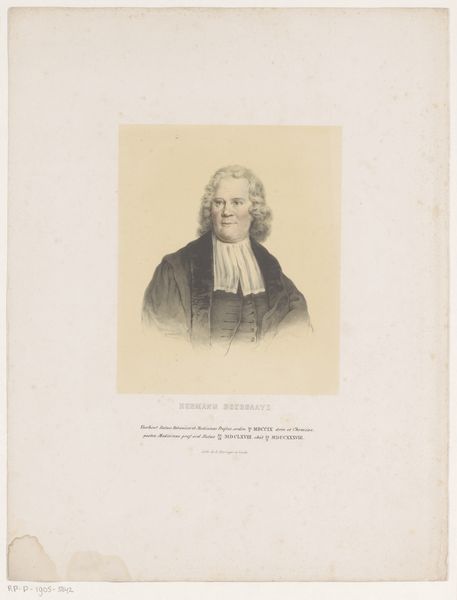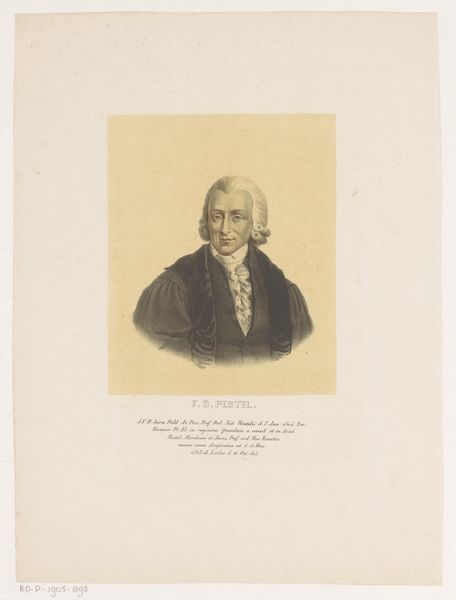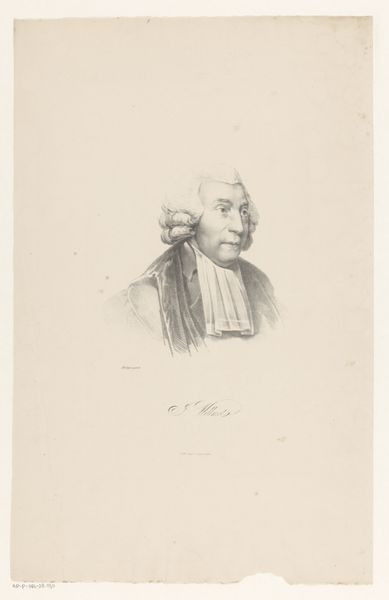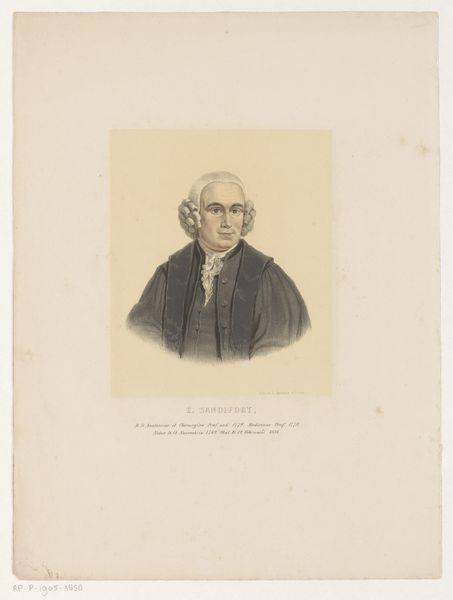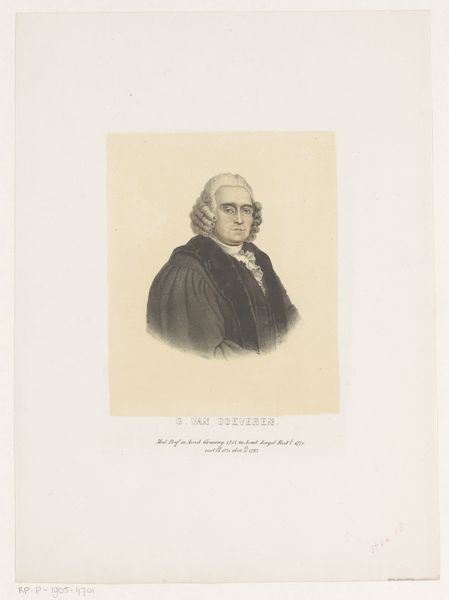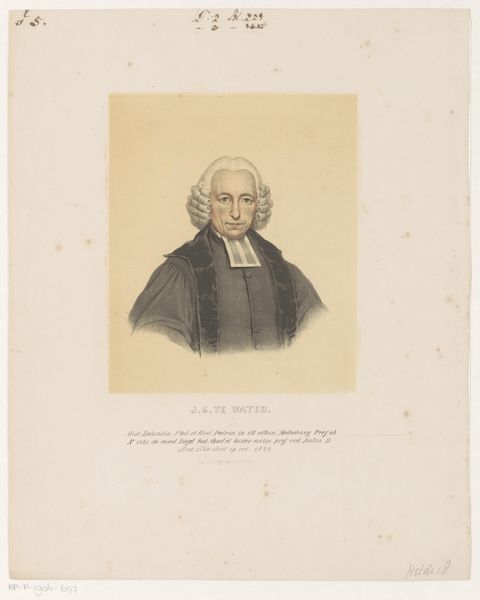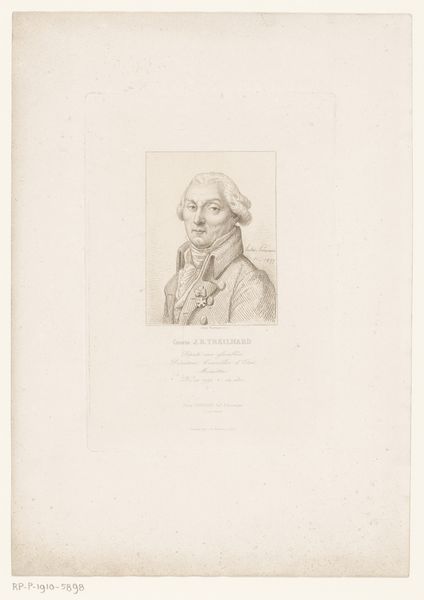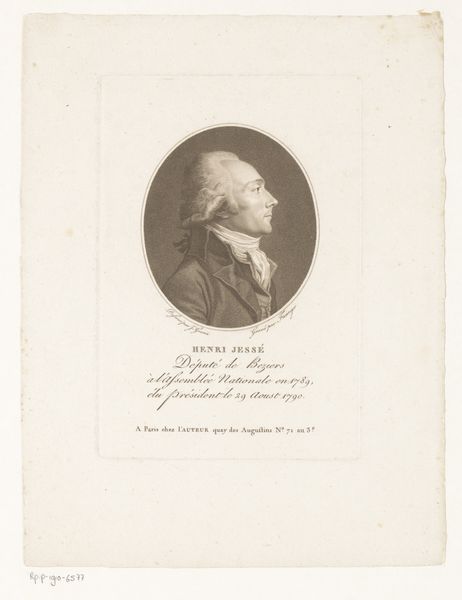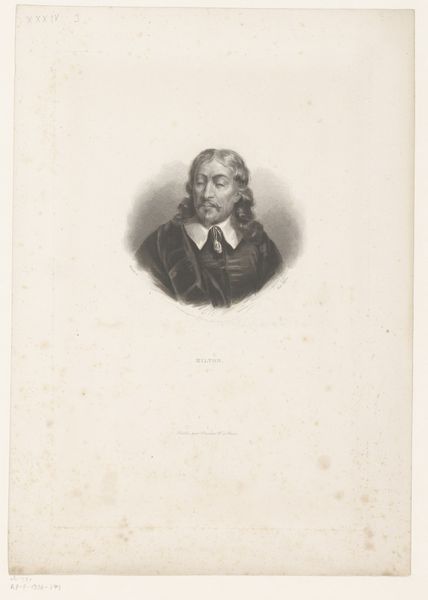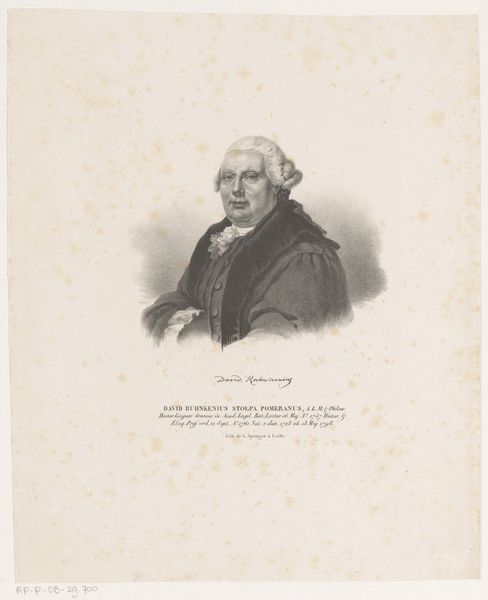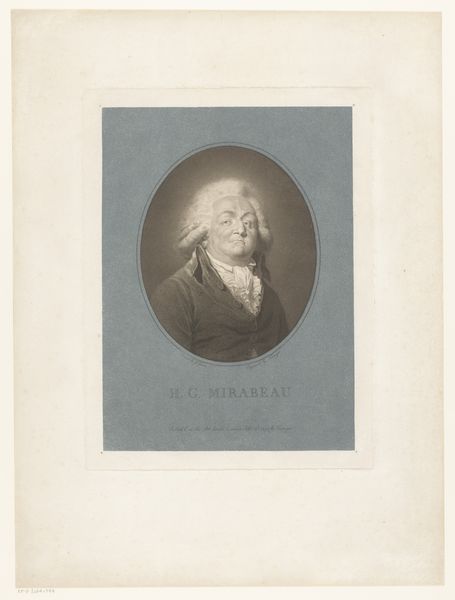
#
portrait
# print
#
pencil sketch
#
academic-art
#
realism
Dimensions: height 355 mm, width 270 mm
Copyright: Rijks Museum: Open Domain
Curator: Here we have a print titled "Portret van Dionysius Godefridus van der Keessel," created around 1850 by Leendert (I) Springer. It depicts, as the title suggests, a portrait of Dionysius Godefridus van der Keessel. Editor: The first thing that strikes me is the tight, almost claustrophobic composition. The sitter's wig nearly brushes the upper edge of the image area, lending a sense of constrained power. Curator: Considering Van der Keessel's prominence as a professor of law, the constrained space reflects the limits placed upon knowledge and power during this era. The tight frame symbolizes a system he both operated within and possibly challenged through his teachings and writings. How did his work either maintain or subvert prevailing societal norms? That's what really captures my interest here. Editor: While fascinating, the overall impact of Springer's piece relies heavily on the gradations of tone, doesn't it? It's a carefully constructed visual hierarchy, directing our attention immediately to the face, which emerges from the darker garments through the pale wig. Semiotically, it's a study of enlightenment amidst the dark realities of… well, what dark realities do you suppose Springer had in mind? Curator: Think about the legal framework of the mid-19th century, shaped by colonial legacies and social inequalities. Was Van der Keessel's presence simply a reflection of power or an active questioning? Who was he outside the courtroom or university? How were the voices and realities of the dispossessed included—or not—in the existing narrative? Editor: I see your point; even a portrait becomes a potential site for probing the relationship between the individual and larger historical structures. Still, I remain captivated by the stark simplicity. The academic style, with its precise lines and controlled palette, channels attention where it needs to go to decode Van der Keessel as an individual. Curator: Precisely, but individual within a precise context! Ultimately, I believe that viewing this piece while exploring its layered historical context truly allows one to appreciate both its visual design and its place within history. Editor: I concur, and from my end, the semiotic analysis really does bring an increased appreciation for the composition and artistic process that allows its powerful, contextual readings.
Comments
No comments
Be the first to comment and join the conversation on the ultimate creative platform.
